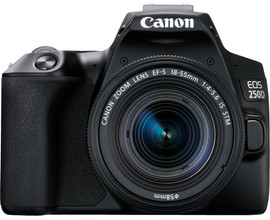
Compare the Canon EOS 250D to the Canon EOS 200D
Canon EOS 250D
Pros
- Thanks to the 143 focus points, you can accurately focus on your subject.
- You can record detailed video footage in 4K resolution.
- The Eye AF automatically focuses on eyes, which makes the camera suitable for portrait photography.
Cons
- You'll see blur on your photos with a higher ISO value.
Most important differences between the Canon EOS 250D and the EOS 200D
| Canon EOS 250D | Canon EOS 200D | |
|---|---|---|
| Image sensor | APS-C | APS-C |
| ISO sensitivity | 100-25,600 | 100-51,200 |
| 4K video | Yes | No |
| Number of focus points | 143 | 9 |
| Weight | 494g | 453g |
| Eye AF | Yes | No |
User-friendliness
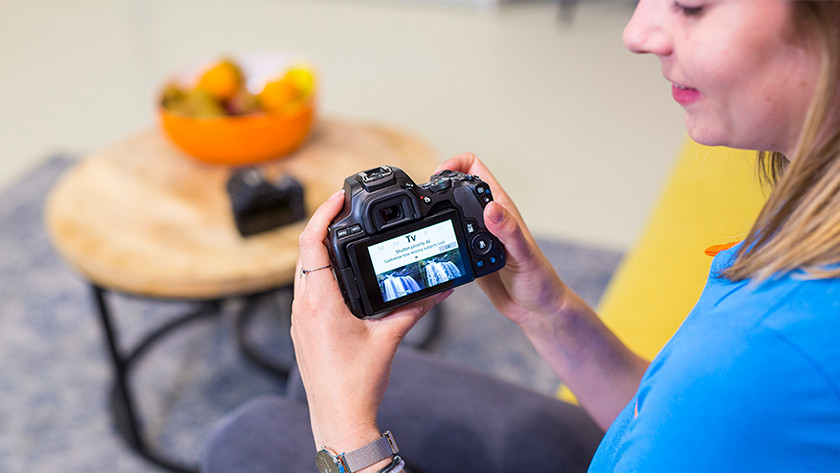
Canon EOS 250D: visual guide
The Canon EOS 250D is suitable for starting photographers. Thanks to the help function and creative assist function, taking photos is easy. The visual guide tells you step by step what the settings of the camera mean. So you can quickly set up the camera yourself. The design is compact and light, so you can easily take it with you on your travels. And with the tiltable screen, you can easily take selfies or vlogs. This way, you'll be able to see the frame of your photo or video.
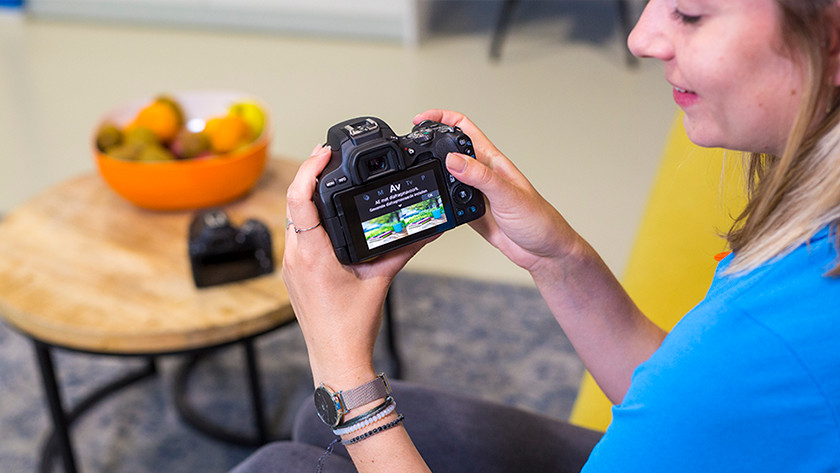
Canon EOS 200D: visual help function
Just like the Canon EOS 250D, the EOS 200D has a visual guide that helps you get to know the camera quickly. The camera shows what the effects of the different settings are. This makes it suitable for novice photographers. The size of the 200D is just as compact as that of the 250D, so you can easily take it with you on your travels. The 200D has a tiltable screen to take selfies and vlogs as well. This allows you to easily create the image frame.
Image quality

Canon EOS 250D: 143 focus points with Eye AF
With the Canon EOS 250D, you can take sharp photos thanks to the APS-C sensor. Even in low-light situations. In addition, the camera has a maximum ISO value of 25,600. Keep in mind that blur becomes more visible when you increase the ISO value. The camera has a fast autofocus with 143 focus points. You can focus quickly and accurately as a result. And thanks to the Eye AF, you can automatically focus on the eyes. That's useful if you take selfies or vlogs.
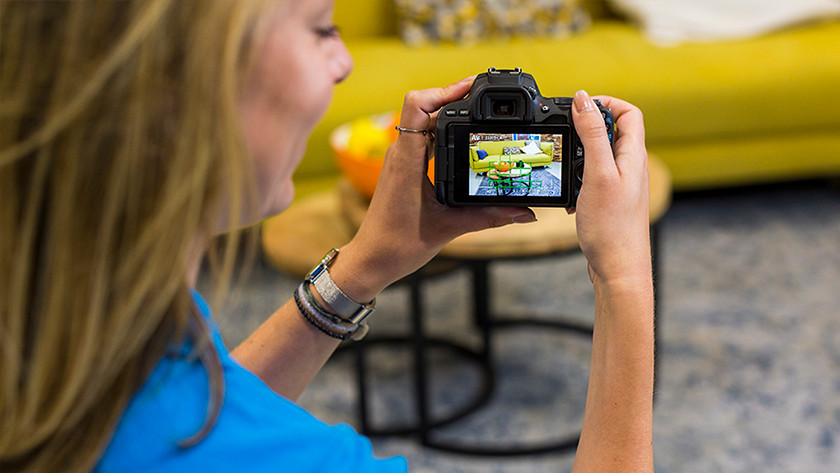
Canon EOS 200D: 9 focus points
The Canon EOS 200D also has an APS-C sensor you can take photos in different light situations with. This camera has a higher maximum ISO value than the EOS 250D, which is 51,200. If you increase the ISO value, blur becomes more visible on your photos and videos. The autofocus system has 9 focus points. Due to this low number, it's more difficult to accurately determine which part of the photo you focus on. The camera also doesn't have Eye AF.
Recording functions

Canon EOS 250D: 4K resolution
With the Canon EOS 250D, you can record sharp video footage in 4K resolution. This results in images with a lot of details. Thanks to the high resolution, you have a lot of creative possibilities. You can crop your videos, pan them, and zoom in up to 200%. The disadvantage of 4K footage is that it requires more storage. So you'll need a memory card with a lot of storage space. To improve the sound quality of your videos, connect an external microphone.
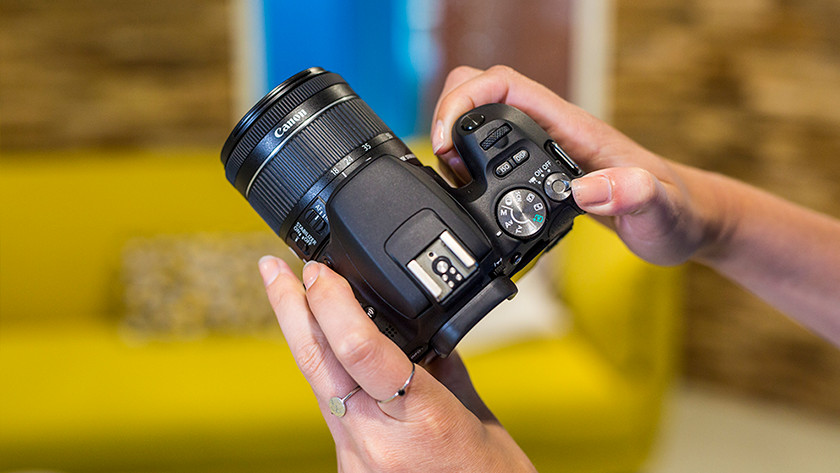
Canon EOS 200D: Full HD resolution
With the Canon EOS 200D, you can record in Full HD resolution. This resolution is 4 times lower than 4K. That's why the images show less details, but are still very sharp. As Full HD videos require less storage than 4K footage, you can store more footage on the same memory card. And just like the EOS 250D, the 200D has an external microphone jack. This allows you to improve the sound quality of your videos.
Conclusion
If you often record videos, the Canon EOS 250D is a suitable choice. This camera records in high 4K resolution. With the 143 focus points, you can focus accurately. In addition, the 250D Eye AF automatically focuses on the eyes. If the video quality is less important to you, the 200D is a good option. Despite the lower number of focus points, you can take sharp photos with this camera. And thanks to the high ISO value, you can also take photos in low-light locations.



